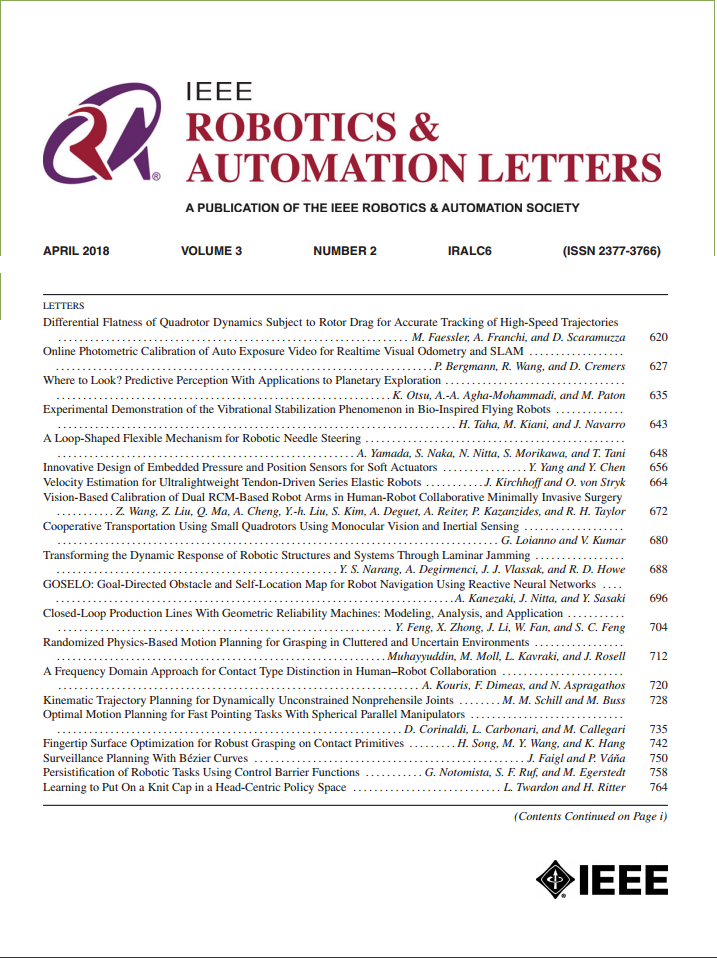Unsupervised Discovery of Objects Physical Properties Through Maximum Entropy Reinforcement Learning
IF 4.6
2区 计算机科学
Q2 ROBOTICS
引用次数: 0
Abstract
Understanding the environment is crucial for autonomous robots to perform navigation and manipulation tasks. Never-seen-before objects may have complex appearances and dynamics, where only physical interactions can help to identify visually hidden properties like mass or friction. In this work we propose a baseline for the newly defined problem of using physical interactions to discover unknown properties of objects, without prior knowledge of them or any supervision. The agent first uses intrinsically motivated unsupervised reinforcement learning to learn how to interact with objects, so as to get observations with a level of information which eases the physical properties estimation. A self-supervised predictive task is then set up while following the learned behaviour to extract a latent representation of the physical properties of an object. When applied to a simulated mobile robot in presence of varying objects, the proposed baseline identifies and differentiates categorical properties, e.g. shape, and quantifies continuous properties, e.g. mass and friction, with excellent correlations to their true values even from noisy observations. It achieves significantly better results than simple interactions of a policy that performs poor exploration. This work provides an implementation of a functional, object-oriented action-perception cycle for embodied robotic agents.求助全文
约1分钟内获得全文
求助全文
来源期刊

IEEE Robotics and Automation Letters
Computer Science-Computer Science Applications
CiteScore
9.60
自引率
15.40%
发文量
1428
期刊介绍:
The scope of this journal is to publish peer-reviewed articles that provide a timely and concise account of innovative research ideas and application results, reporting significant theoretical findings and application case studies in areas of robotics and automation.
 求助内容:
求助内容: 应助结果提醒方式:
应助结果提醒方式:


